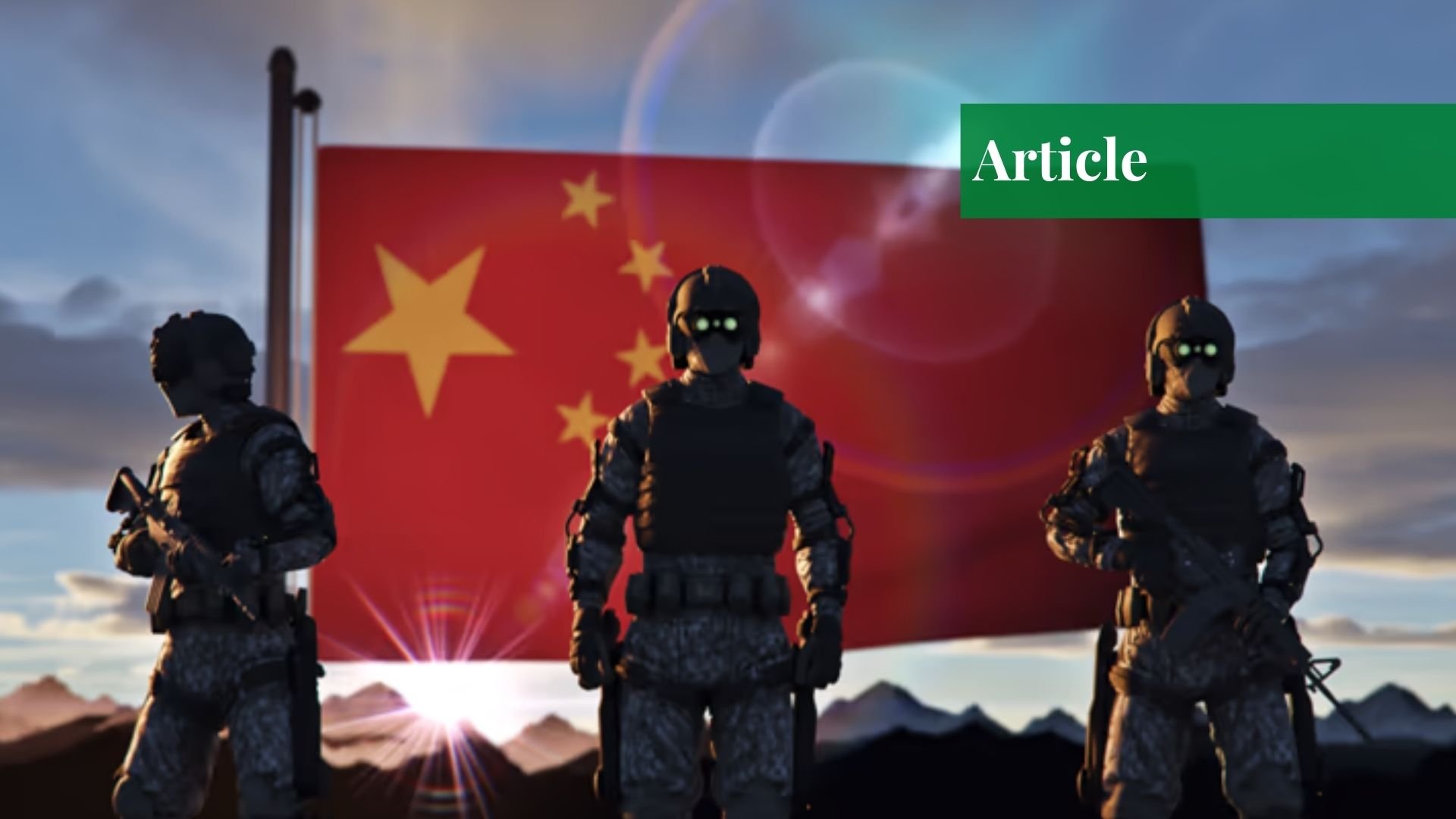China: An Alternative to the US
China has emerged as the country with the fastest-growing influence across the world and, of course, a rapidly growing economy. In recent years, China has established itself as a nation willing to initiate bilateral agreements and policies centered on economic growth with nearly all regions of the world. The Chinese state refers to this as a win-win situation for both countries, as they will benefit from the policy without any interference in their domestic matters from China. This has come as a breath of fresh air, indicating that China will guarantee a policy of economic development without pursuing political gains, marking a stark shift from the policies of the USA, which has a history of contingent policies that impose restrictions on other nations.
If a country fails to comply with these conditions, there is a threat of sanctions from the US. These contingencies often meddle in a country’s domestic affairs and dictate its stance on various international issues. One example of US policies is when the US delivered the first batch of F-16s to Pakistan in 1983 under the Peace Gate I program during the Cold War; these F-16s came with strings attached. One notable condition, which still stands today, is that Pakistan cannot use the F-16 aircraft offensively against any state, especially India, and can only utilize them for defense.
This condition undermines the purpose of Pakistan acquiring the aircraft, as it was implied that the jets would primarily be used in times of crisis against India, Pakistan’s biggest rival. This is where China comes into play. When Pakistan realized it could not use the F-16s, the country soon understood the need for an alternative defense mechanism. Consequently, Pakistan and China began manufacturing the JF-17 Thunder, with 58% of the design created by Pakistan and China handling the rest. Today, the JF-17 Thunder is a formidable aircraft in the hands of the Pakistani Air Force, as demonstrated by the air force during Operation Bunyan um Marsoos against India earlier this May. This example illustrates why China has gained the opportunity to overshadow the US in the arms trade.
Evolution of China’s Fighter Jet Development Post-Cold War
After the Cold War ended and China-Russia ties suffered a setback, it was during this period that China began to localize its defense resources. At that time, Beijing lacked the necessary means to manufacture its defense materials. Consequently, China started producing its fighter jets, although the engines used in these jets were merely copies of the Russian engines, which had been developed after years of research and development. Examples of these jets include the Shenyang J-11, Shenyang J-16, and Chengdu J-10, which initially relied on Russian engines. Naturally, China could not suddenly replicate the same level of technology, so it utilized Russian technology instead.
The Russians initially permitted this arrangement and did not raise concerns because, according to analysts, they did not view these jets as competition for their own. However, they did impose restrictions on the sale of these jets to countries that could potentially use them against Russia, as China asserted that these jets were just as capable as Russian ones. The conditions and political nature of the Russian demands prompted China to abandon Russian technology and develop its fighter jets, although China still maintains a fleet of jets equipped with Russian engines. According to sources, even the J-10 initially relied on the Russian engine AL-31FN while developing its own Shenyang WS-10. More recently, however, China’s fighter jets have largely moved past their Russian legacy.
Arab Countries Shift Towards Chinese Military Support
Arab countries have recently shown a stronger interest in a more localized defense system that excludes political strings, particularly after the ongoing conflict between Israel and Palestine. From the onset of this conflict, despite witnessing the barbaric and inhumane actions of Israel, the leaders of the Arab world found themselves restrained, as they could not provide military aid to Palestine due to conditions set by Washington concerning military resources.
Israel is the USA’s strongest ally, which has consistently influenced how and when American-manufactured arms are used; therefore, the US restricts the use of these military resources against it. This has been a significant reason why many Arab countries are turning to China for their arms needs, as China has made it clear in its pitch that if countries purchase arms from them, it will be more economical, providing high-quality arms without any political strings attached. This has attracted numerous buyers from the Middle East to China’s military technology. Consequently, from 2010 to the 2020s, China has become the world’s fifth-largest arms exporter, even though it began localizing arms production just 30 years ago after the Cold War.
Chinese Fighter Jets in the Middle East: Interest but No Sales
China displayed its fighter jets for the first time in the Middle East back in 2023, when the People’s Liberation Army Air Force (PLAAF) aerobatic team performed at the Dubai Air Show. However, this event did not prove successful in increasing the sales of Chinese aircraft in the region. Although many Middle Eastern countries have relied on China for the purchase of military drones since 2010, due to the US being reluctant to sell, Arab countries still do not rely on the fighter jets that Beijing manufactures.
The United Arab Emirates made notable military purchases, including the Chinese L-15 trainer jets, and held two joint military training sessions with China in 2023 and 2024, but still opted to buy the French Rafales instead of the Chinese fighter jets. This shows that while Arab countries may be hesitant concerning fighter jets, they are willing to procure China’s other military technology.
Some Middle Eastern countries have shown interest in buying jets manufactured by Beijing. Iran recently proposed purchasing 36 J-10 C jets from China, but it remains unclear if Iran will proceed with this deal, as it is currently awaiting delivery of Russian SU-35 jets that it has purchased. This indicates that although countries in the region have shown interest in Chinese jets, none have finalized a purchase.
Joint Military Training: Eagles of Civilisation 2025
Earlier this month, on May 4th, “Eagles of Civilisation 2025,” a joint training between Egypt and China, was held in Cairo. The purpose of this training, according to spokespersons, was to enhance coordination and exchange between the forces of the two countries and to train the pilots and military crew for combat scenarios. During this training, China displayed its 4th-generation fighter jet, the Chengdu J-10, and its warning aircraft, the KJ-500, in addition to its YU-20 tankers. This event was significant, as it marked the first time that Chinese fighter jets were observed in combat scenarios, providing an opportunity to assess the performance of these jets. Experts believe this event will greatly influence the sales of Chinese aircraft, particularly when you take into account the performance of the J-10s in the recent India-Pakistan conflict.
Conclusion
Although Beijing has managed to maintain its position as one of the largest arms exporters in the world, China has had limited success in selling its fighter jets to countries beyond Pakistan, Myanmar, Nigeria, Iraq, and Azerbaijan. While China has produced several J-10 and J-20 jets, demand for these aircraft has been low. According to the Stockholm International Peace Research Institute, China exported $7 billion worth of aircraft from 2000 to 2020, significantly less than the US, which exported $100 billion worth during the same period. This discrepancy is largely attributed to doubts about the quality and capabilities of China’s military technology, particularly its aircraft, as they had not been tested in combat before this.
However, this changed when Pakistan successfully deployed these jets against India during its operation Bunyan um Marsoos, a country that operates superior jets like the Rafael. In this engagement, Pakistan demonstrated that the aircraft’s effectiveness is more reliant on the skill of the pilot. While the crisis between Pakistan and India was regrettable, it did alter the market prospects for the Chinese jets used by Pakistan and, notably, for the French Rafales that were shot down during this conflict.
This development is believed to affect the sales of the Chinese jets in the Middle East as well, as the only reason why the Chinese aircraft sales were not successful in the Gulf was due to the lack of assurance when it came to the capabilities of these jets. It is believed that many notable Middle Eastern countries, especially Egypt and the UAE, which were already considering buying these aircrafts, will get them from China for a defense system that does not have any strings attached, especially Egypt, which is a next-door neighbor to Israel, against whom the country needs to have a strong defense system, which is not possible with the American jets.
If you want to submit your articles and/or research papers, please visit the Submissions page.
To stay updated with the latest jobs, CSS news, internships, scholarships, and current affairs articles, join our Community Forum!
The views and opinions expressed in this article/paper are the author’s own and do not necessarily reflect the editorial position of Paradigm Shift.
Fatima Mazhar is a 9th-semester law student at the International Islamic University, Islamabad. She is currently serving as the chairperson of the Law Students Council, Pakistan.



